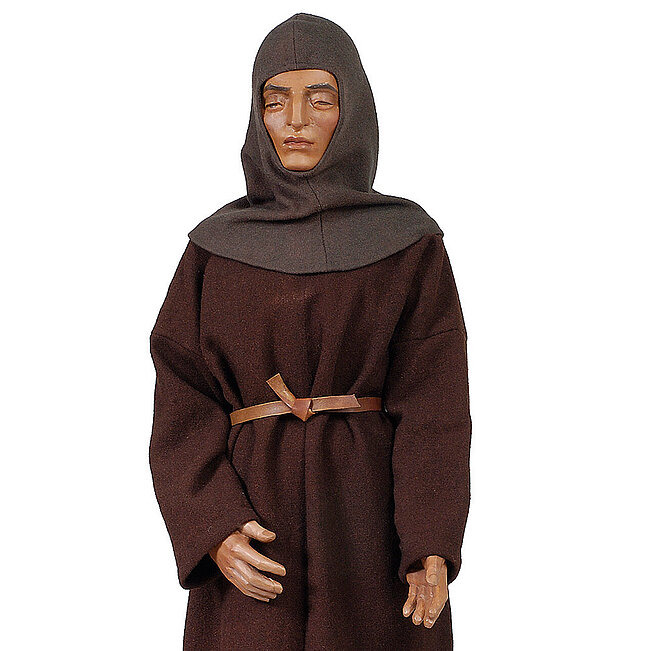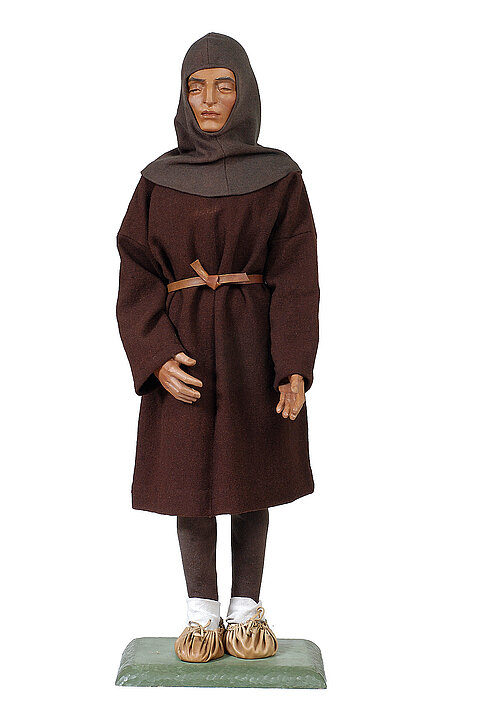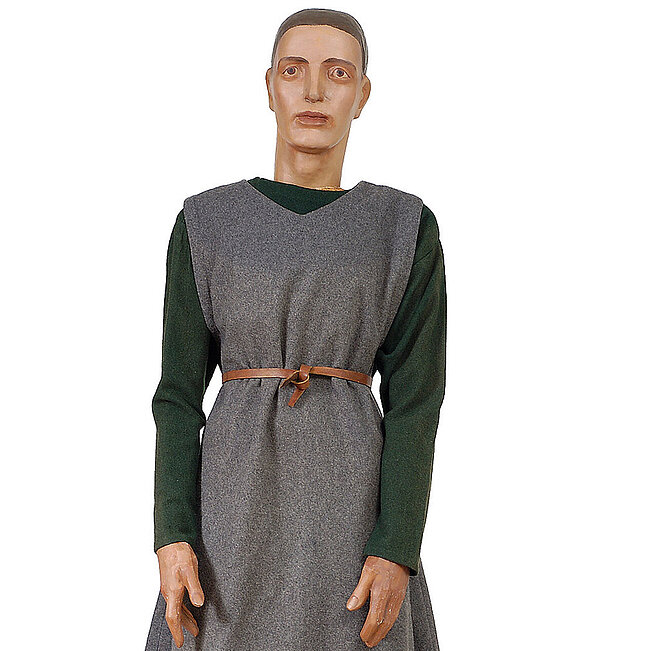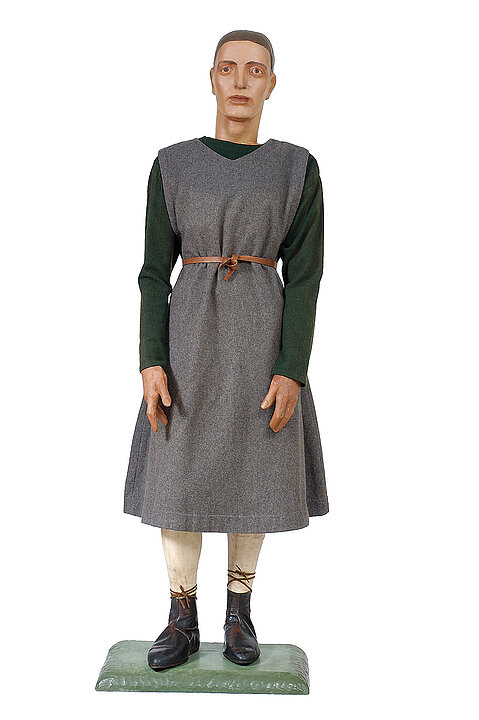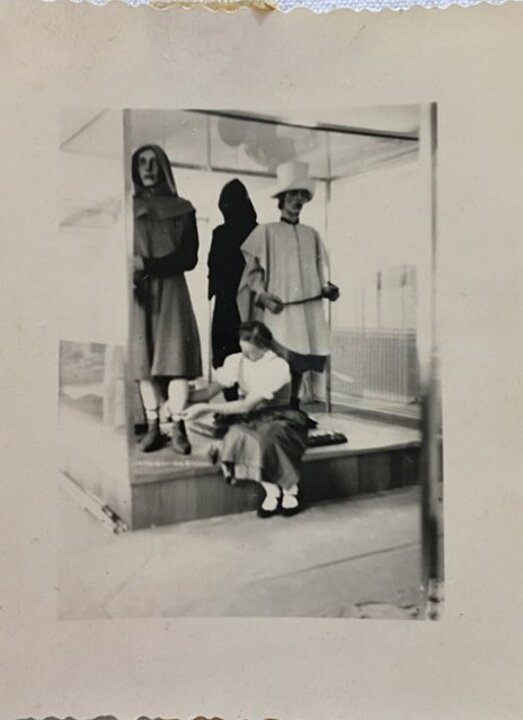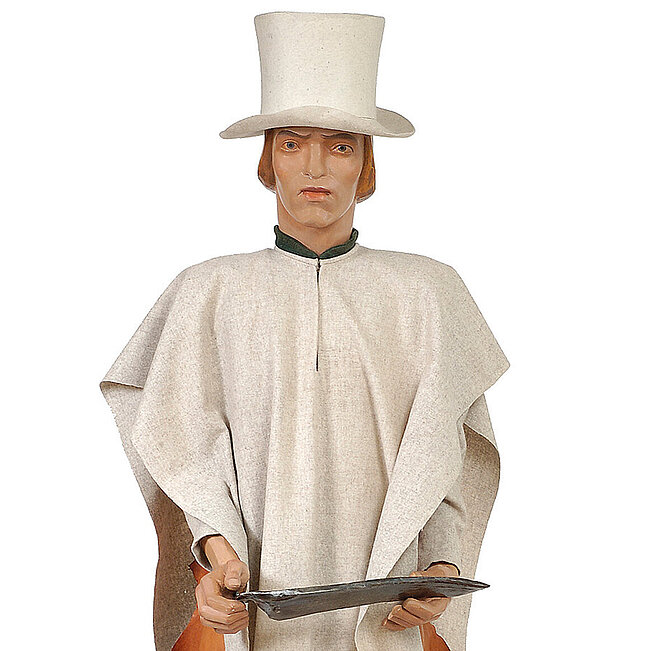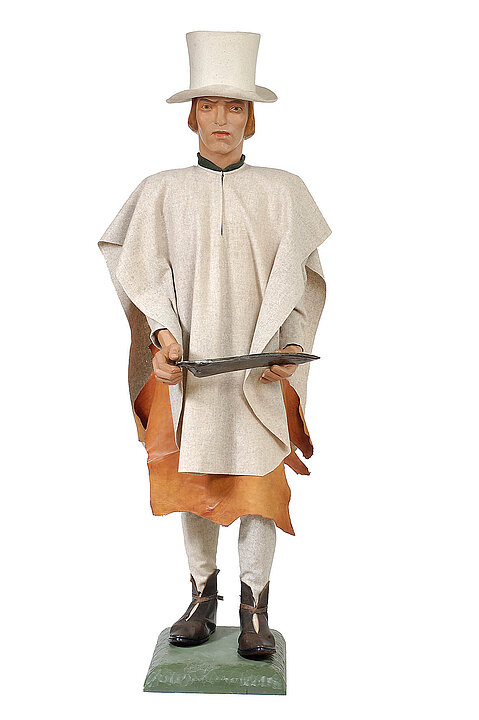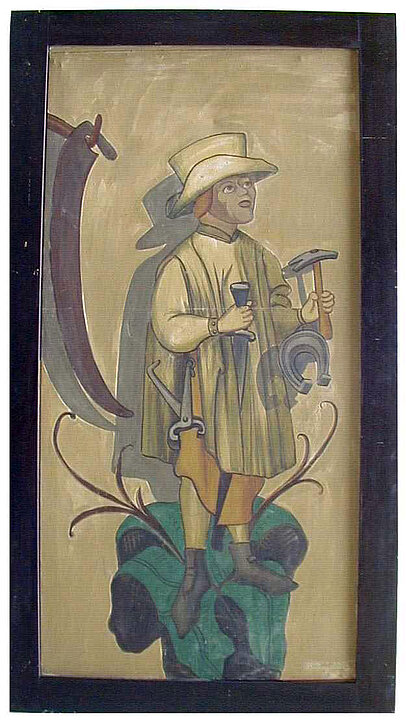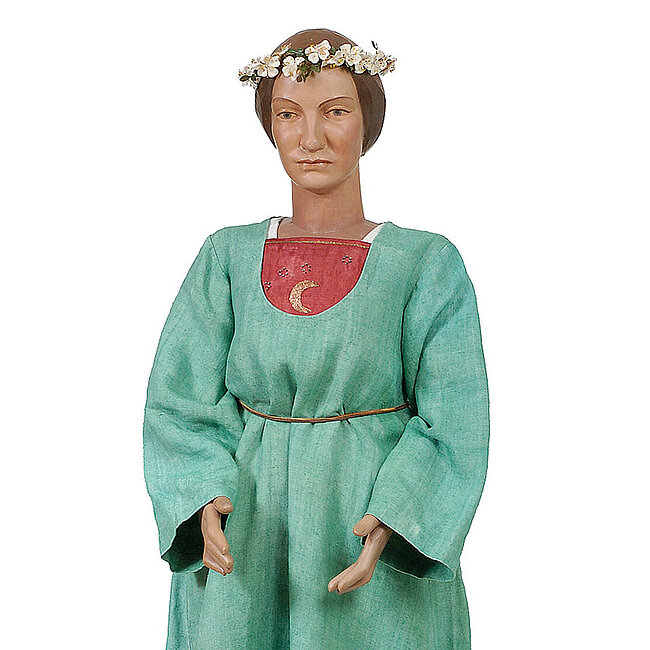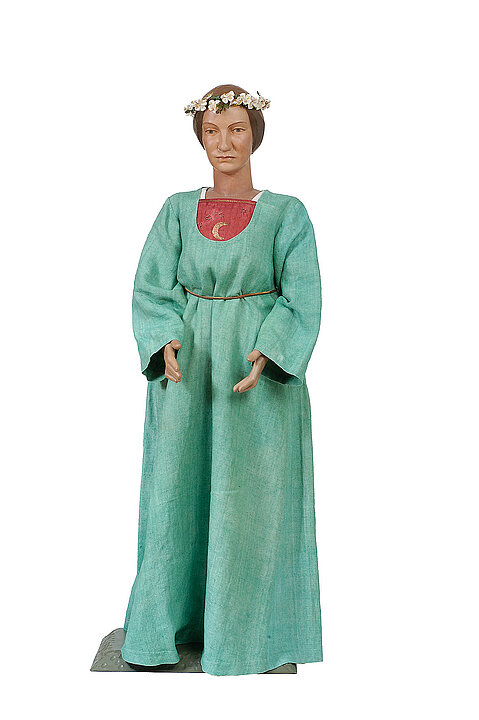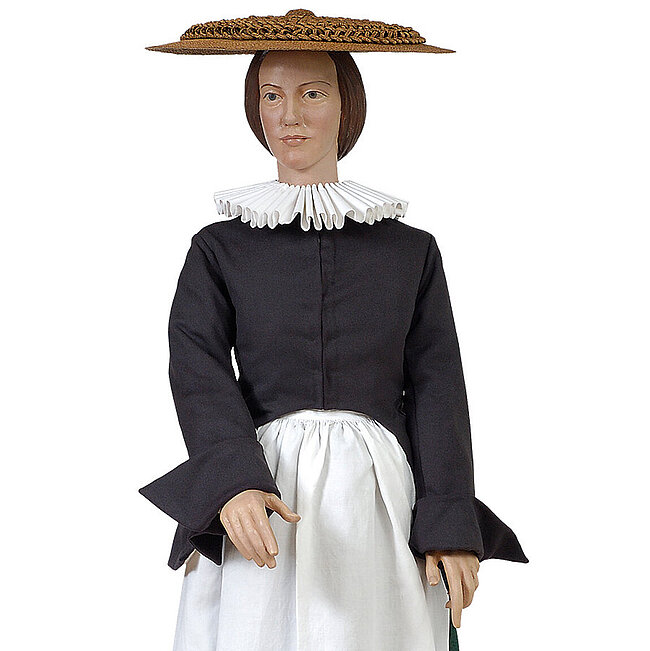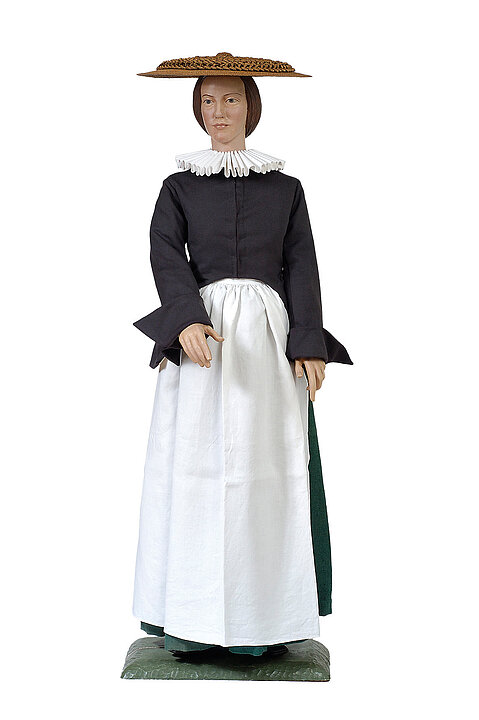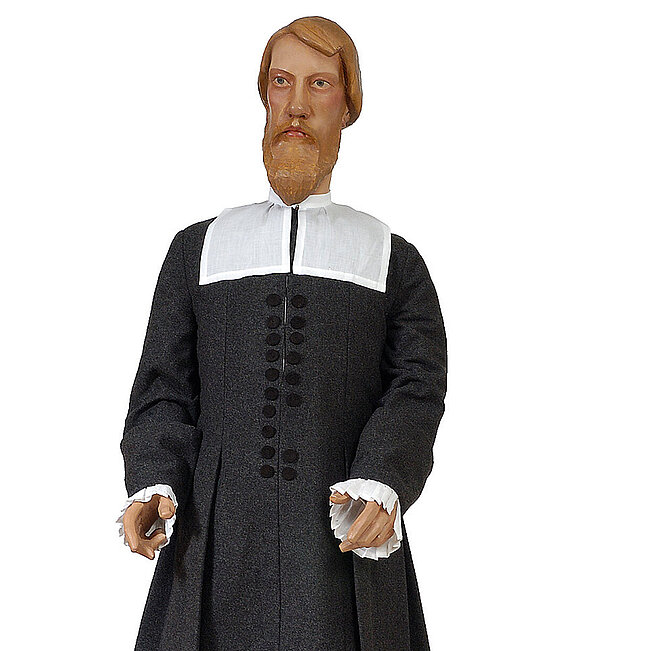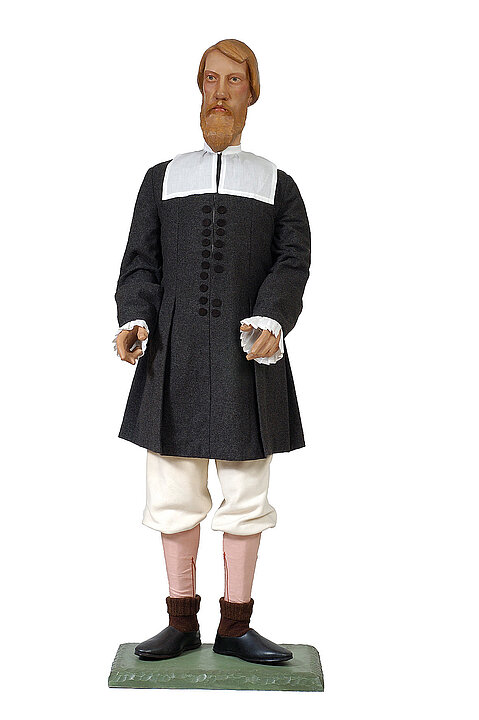This figure is based on an altarpiece in St. Lorenzen ob Murau. The image also features in the Book of Styrian Tracht as a colour sketch by Konrad Mautner. Since the study project Unheimlich heimisch run by the Institute of Cultural Anthropology and European Ethnology at the University of Graz in 2016, the mannequin created by Alexander Silveri has also been known in-house as ‘Quasimodo’. Apparently, his appearance was reminiscent of popular depictions of the well-known fictional character in Victor Hugo's novel The Hunchback of Notre-Dame.
His clothing, created mainly by Melitta Maieritsch, consisted of leather wrapped shoes, foot patches, loden leg warmers, a tunic of brown loden with a narrow leather belt, and a Gugel—a hood worn primarily by shepherds.



















